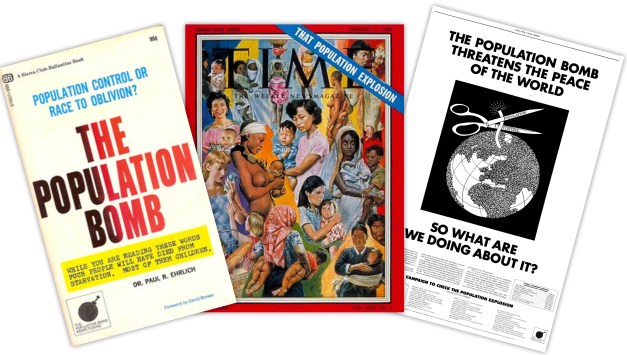IN the P.I. back in the day, students as young as first graders were taught that an ever growing population would lead to Apocalypse Now. As Dr. Paul Ehrlich, Stanford University professor, would put it in his bestselling book published in 1968, “The Population Bomb,” “The battle to feed all of humanity is over.” Humanity had lost. Ehrlich said “hundreds of millions of people are going to starve to death.” And “nothing can prevent a substantial increase in the world death rate.”
His “prediction” was an updated version of what another highly intelligent scholar, Thomas Robert Malthus, “realized” in 1798 (not a typo): population growth would inevitably surpass humanity’s ability to produce food, dooming us to famine or war.
Philippine President Ferdinand E. Marcos Sr. was among the signatories of the “World Leaders Declaration on Population” in Dec. 1967. They acknowledged that the planet’s “population problem” threatened our future. After he was re-elected in 1969, Marcos Sr. announced a national policy for family planning. In the 1970s, one of the most popular pop groups in Manila was the Family Birth Control Band. (Incidentally, in the same decade, the “climate hysteria” was about global cooling and the coming “Ice Age.” But that’s another story.)
In 1980, in what was then the world’s most populated country, China, the ruling party began the implementation of the one-child policy, which was crafted by, literally, a rocket scientist.
Fast forward to 2022 in the Philippines where the authorities reported that the nation’s fertility rate had dipped to its lowest in five decades. Generally, the Philippine government stated, “fertility has been declining in all age groups since 2008.” (This was around the same time when the population doomsayers were castigating the Catholic clergy for opposing “artificial” measures to prevent pregnancy. The church was also against corruption, drug addiction and other criminal activities, but apparently the faithful would listen only to a priest preaching against the family planning pill.)
Today in China, the government wants Chinese women to have more babies.
According to the Wall Street Journal, “With the number of babies in free fall — fewer than 10 million were born in 2022, compared with around 16 million in 2012 — China is headed toward a demographic collapse. China’s population, now around 1.4 billion, is likely to drop to just around half a billion by 2100, according to some projections. Women are taking the blame.”
“Demographers and researchers predict that data will show Chinese births dipping below 9 million in 2023,” the Journal added. “The United Nations forecasts 23 million births in India, which in 2023 passed China as the world’s most populous country. The U.S. will have around 3.7 million babies born in 2023, the U.N. estimated.”
It was the one-child policy that “brought much of China’s demographic gloom: There are fewer young people than in the past, including millions fewer women of childbearing age every year. Those women are increasingly reluctant to marry and have children, accelerating the population decline.”
In her 2016 book, “One Child: The Story of China’s Most Radical Experiment,” Pulitzer-prize winning journalist and author Mei Fong noted that an economics instructor, Liang Zhongtang, was the only vocal critic of the one-child policy at its inception. No one in authority listened to him. “He bitterly resented what he saw as the arrogance of…scientists, ‘asking [the] people of China to use their lives to practice [the scientists’] inadequate calculations….’ He raged at how scholars, ‘using science as a disguise to stoke the fire,’ became cheerleaders for the central government’s plan.”
There it is. Government planners backed by scientists whose goal is to overhaul and improve human society if not humanity itself. What could possibly go wrong?
“Looking back,” Fong wrote, “it seems amazing how confident China’s [rocket scientists] were in their projections of population growth, refusing to factor in how human behavior or technology might change their projections. They appeared utterly sure of the correctness of their solution.”
In “Factfullness,” Professor Hans Rosling, a physician, explained why today, all around the world, many people are having fewer children. He said once they left extreme poverty, most people “no longer needed large families for child labor on the small family farm. And they no longer needed extra children as insurance against child mortality. Women and men got educated and started to want better-educated and better-fed children: and having fewer of them was the obvious solution.” He added, “The dramatic drop in babies per woman is expected to continue, as long as more people keep escaping extreme poverty, and more women get educated, and as access to contraceptives and sexual education keeps increasing. Nothing drastic is needed. Just more of what we are already doing.”
The next time you hear politicians or self-proclaimed experts telling you to just agree with them right away and support drastic measures because they “follow the science” — run.
Send feedback to editor@mvariety.com












